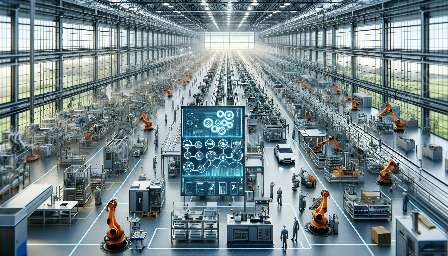Manufacturing processes rely heavily on assembly line balancing to streamline production and maintain efficient facility layout. By optimizing the distribution of tasks and resources, manufacturers can maximize productivity and reduce operational costs. In this comprehensive guide, we'll explore the principles, benefits, and challenges of assembly line balancing, and how it relates to facility layout and the broader manufacturing industry.
The Basics of Assembly Line Balancing
Assembly line balancing is the process of distributing tasks and workload across a production line to achieve optimal efficiency and productivity. This involves allocating resources, such as machinery, labor, and space, in a way that minimizes idle time and eliminates bottlenecks. The goal of assembly line balancing is to create a smooth, continuous flow of work while ensuring that each workstation operates at its full capacity.
Key Principles of Assembly Line Balancing
Several key principles govern the practice of assembly line balancing:
- Task Allocation: Assigning specific tasks to workstations based on their capability and resource requirement.
- Workstation Design: Structuring workstations to facilitate the efficient execution of tasks and minimize unnecessary movement or downtime.
- Resource Optimization: Utilizing available resources, such as labor and machinery, to ensure balanced and synchronized production.
Benefits of Assembly Line Balancing
Optimizing assembly line balancing offers numerous benefits to manufacturing facilities:
- Higher Productivity: By eliminating inefficiencies and minimizing idle time, assembly line balancing can significantly improve productivity and output.
- Reduced Costs: Efficient production processes lead to lower operational costs and reduced wastage of resources.
- Improved Quality: Balanced assembly lines can enhance product quality by facilitating consistent and standardized production practices.
- Enhanced Flexibility: Well-balanced assembly lines provide the flexibility to adapt to changes in demand and production requirements.
- Employee Satisfaction: When workstations are balanced, employees experience a more equitable distribution of tasks, leading to improved morale and job satisfaction.
Challenges of Assembly Line Balancing
While assembly line balancing offers significant advantages, it also presents its own set of challenges:
- Complexity: Balancing a production line requires precise calculations and careful consideration of various factors, making it a complex task.
- Workstation Variability: Workstations may have different capacities and capabilities, creating challenges in achieving a balanced distribution of tasks.
- Changing Demand Patterns: Fluctuations in demand can disrupt the balanced arrangement of tasks, requiring frequent adjustments.
- Technological Limitations: Dependency on machinery and automation can introduce limitations to the balancing process, especially in cases of equipment breakdown or maintenance.
Integration with Facility Layout
The effective implementation of assembly line balancing is closely tied to facility layout within a manufacturing environment. Facility layout determines the physical arrangement of workstations, machinery, and other resources to optimize the flow of materials, information, and people within the production process.
When considering facility layout in the context of assembly line balancing, several factors come into play:
- Space Utilization: Efficient use of floor space is essential to accommodate balanced assembly lines without causing congestion or hindering workflow.
- Workflow Optimization: The layout should support the smooth flow of materials and components from one workstation to another, aligning with the balanced assembly line structure.
- Ergonomics and Safety: Proper facility layout takes into account ergonomic considerations and ensures a safe working environment for employees across all workstations.
- Scalability and Adaptability: The layout should allow for easy expansion and reconfiguration to accommodate changes in production volume or process requirements.
By integrating assembly line balancing with facility layout, manufacturers can achieve a harmonized production environment that maximizes efficiency and minimizes disruptions.
Assembly Line Balancing in Modern Manufacturing
As manufacturing processes continue to evolve with advancements in technology and automation, the role of assembly line balancing becomes even more crucial. Modern manufacturing facilities are increasingly leveraging digital tools, such as simulation software and optimization algorithms, to fine-tune assembly line balancing and facility layout.
Automation technologies, including robotics and intelligent control systems, play a pivotal role in optimizing assembly line balancing by streamlining tasks and ensuring seamless coordination between workstations. Real-time monitoring and data analytics further enhance the ability to identify and address inefficiencies within the assembly line, leading to continuous improvement and optimization.
Conclusion
Assembly line balancing is an essential practice in manufacturing that directly influences facility layout and overall operational efficiency. By carefully aligning task allocation, resource optimization, and workstation design, manufacturers can achieve a balanced production environment that drives productivity, reduces costs, and enhances product quality. Integration with facility layout further amplifies the impact of assembly line balancing, laying the foundation for a streamlined and adaptable manufacturing operation.


